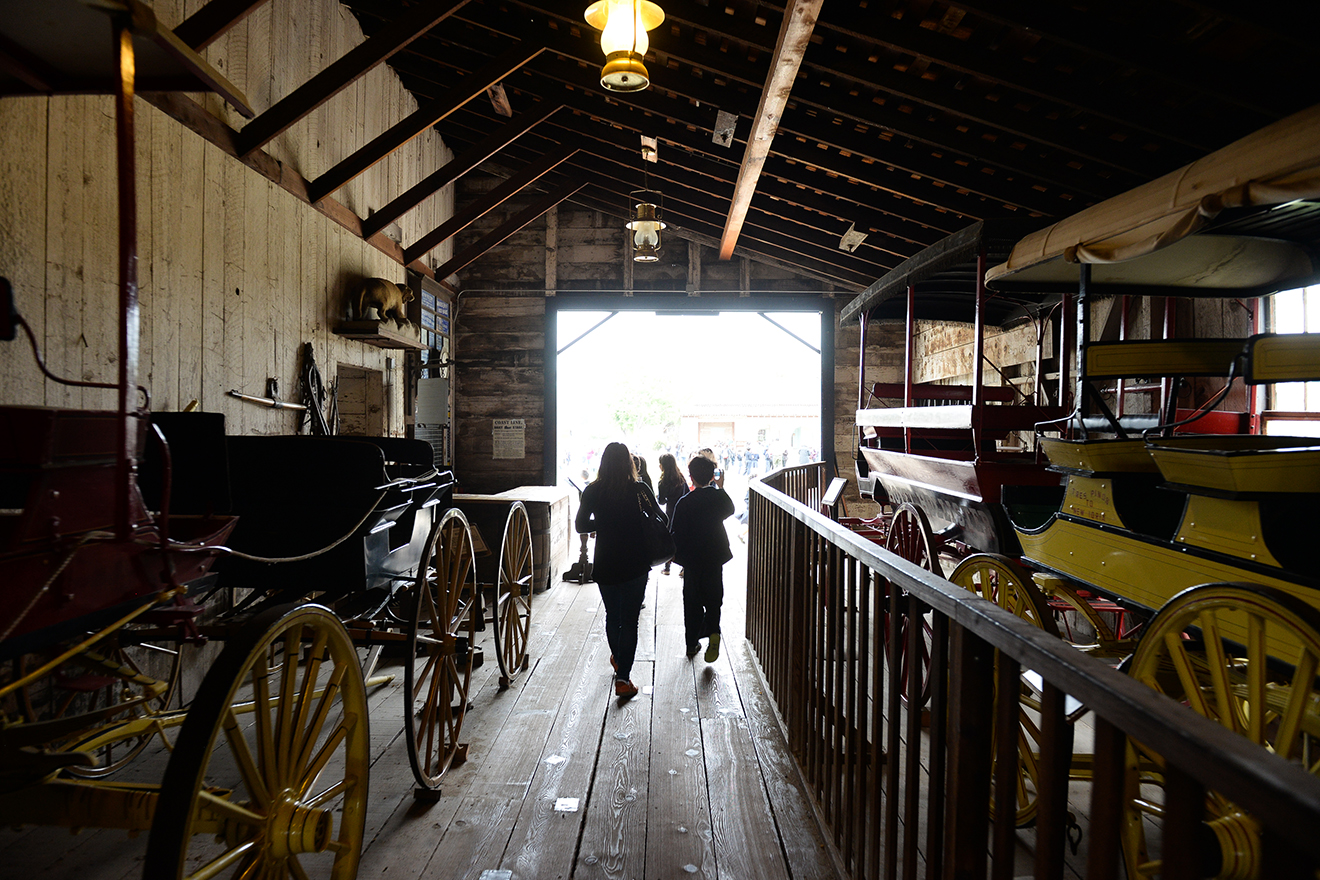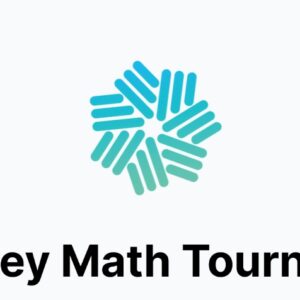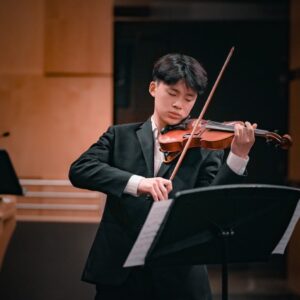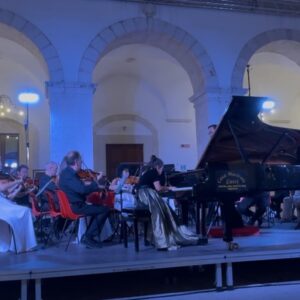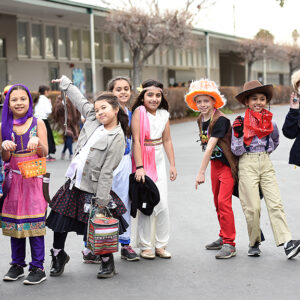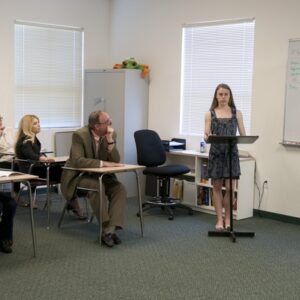This article first appeared in the summer 2017 Harker Magazine.
By Jared Scott Tesler and William Cracraft
When it comes to their day jobs, Harker’s history and social science teachers breathe new life into teaching and learning about the past. “I reject the premise that history is ‘dead’ and I also reject the premise that we need to link every idea back to the ‘now’ to engage students,” said upper school history and social science department chair Donna Gilbert, who teaches three Advanced Placement courses: World History, European History and Art History. “History is fraught with intriguing moments, interesting people and fascinating events. History is human and, therefore, it already is inexorably linked to us.”
Lower School History
Third grade students studying California History with Heidi Gough cognize the three branches of the federal government while participating in a How a Bill Becomes a Law simulation. Each student plays the role of a congressperson who reviews a series of proposed bills – examples include weekly pizza lunches and swim parties – and decides whether to vote for or against them. On the lighter side, every January, Gough’s students get to show their history knowledge by dressing up as their favorite historical figures on Dress for History Day.
Another favorite activity is a trip to Mission San Juan Bautista. “Traditional history classes that I experienced as a student were notoriously dull,” admitted Gough. “My goal is to spark students’ interest and show them the fascinating aspects of learning history. “I see myself as a facilitator of learning,” Gough added. “I think a critical part of my job is to help students learn appropriate social skills, particularly in the areas of communication and real compromise. The events of history are filled with illustrations of bad events in humanity, many stemming from poor communication skills and an unwillingness to learn about others – both still true today. If I am going to make a difference in students’ lives and, hopefully, the future, it is going to be in this area.”
For Tobias Wade, grade 4 World Geography and grade 5 U.S. History teacher, food is th glue that binds families together, so he uses food to illustrate history. Known for in-class screenings of the Travel Channel’s “Bizarre Foods with Andrew Zimmern,” Wade leads an annual Cultural Cookbook lesson involving students’ parents, grandparents, aunts and uncles. As the children research and prepare a unique dish that represents their cultural background and heritage, they learn more about who they are and where they come from. The recipes are compiled into a cookbook students take home.
For the last 20 years, fourth graders have been climbing on buses for a three-day, two-night trip to Coloma, where they explore the Outdoor Discovery School’s California Gold Rush educational program. A naturalist talks about area flora and fauna, meals are eaten outdoors, and a Native American docent lectures on indigenous culture. Parents even send handwritten letters that are handed out on the trip asking about their child’s westward travels and what life is like in the Gold Country, to stimulate thought.
“By focusing on the learning process and not deadlines and due dates as much, students are able to learn in a relatively stress-free environment,” said Jared Ramsey, lower school history and social science department chair. “This promotes the love of learning, instead of completing work solely to get a desired grade.” A fifth grade U.S. history teacher, Ramsey uses Google Maps to geographically orient the major campaigns, theaters and expeditions of the Revolutionary War for his students, who plot these battles via the Web mapping service.
Middle School History
The fun continues in middle school. “All history classes through middle school are survey courses that introduce students to a broad range of areas that include geography, religion, art, politics, economics and social organization for each civilization we cover in class,” explained Keith Hirota, middle school history and social science department chair and sixth grade Ancient History teacher. His students analyze topographic maps of Greece and use modeling clay to assemble raised-relief maps of the Balkans and the Peloponnese peninsulas. “Engaging students in hands-on activities, simulations and roleplaying helps them to learn better through personal involvement,” he said.
In seventh grade World History with Chris Caruso, classroom discussions take on a whole new meaning. Each month, students focus their attention on a different personal virtue or societal value such as compassion, fairness, gratitude or tolerance. Parent and student feedback, he noted, has been overwhelmingly positive.
“Parents most certainly appreciate that their children are learning to become more grateful, more helpful around the house, more kind to their siblings. Students appreciate the opportunity to learn something that will help them in ‘real life,’ a skill that will need to be used even if they don’t enter into a heavily academic field,” said Caruso, whose students present their research findings on religious sites using cutting-edge technologies and tools like Piktochart for infographic design and NoodleBib for bibliographic formatting.
Other teachers use a variety of activities to wedge information into busy middle school brains. As they study the Constitution, students in Ramsay Westgate’s eighth grade U.S. History classes try First Amendment cases – freedom of religion, speech, press, assembly and petition – before a mock Supreme Court. Following the worldwide success of the Broadway musical “Hamilton,” they pen and perform original Bill of Rights-themed songs and raps to demonstrate their understanding of the otherwise heady material.
Those in Allen Lyle’s grade 8 U.S. History classes employ an old-school navigation method to roughly, often frustratingly, calculate the speed at which they walk, run, crawl and perform cartwheels. The log and line method, where a seafarer would toss the log (a piece of wood tied to a line) overboard and then time how many knots passed through his hands, was used by seafarers during the Age of Exploration to measure nautical knots – not an easy thing to do while walking! “This helps them empathize with explorers from centuries ago,” said Lyle, who also teaches sixth grade Ancient History. “It’s also a great way to combine multiple disciplines and make history a bit more real and active for students.”
Meanwhile eighth graders take a deep dive into the culture of the late 20th century. As part of a year-end capstone style project originally developed by Cyrus Merrill (who is on paternity leave this semester; Karan Lodha ’04 is his sub), students conduct extensive independent research, put together lesson plans and educate their fellow classmates on one of four decades – the 1970s, ’80s, ’90s and 2000s – in American history. These 45-minute presentations, made complete with period clothing and accessories, are a fun way for students to absorb a decade of cultural landmarks.
Last year, Sofie Kassaras, now grade 9, and six other students represented the ’70s. “We made a skit describing the fashion, art, music and entertainment as well as a timeline depicting the important political events. I wore bell-bottoms and a baggy shirt,” recalls Kassaras.
Throughout the years, in countless ways, Merrill has helped to make history come alive for his eighth graders. He held a 1920s speakeasy soirée at downtown San Jose’s Orchestria Palm Court. Students have written to legislators, lobbied the bureaucracy, Skyped and otherwise connected with former students now employed by the White House and the Department of State and participated in a number of other hands-on activities.
“My goal is not to teach the past but to teach and inspire students to engage in the present,” said Merrill, a former Fulbright Scholar, James Madison Memorial Fellow and Lyndon Baines Johnson Fellow. “As our values change in the present, so does our way of assessing or determining what to value in the past. I like to think of my subject as applied critical thinking – dead people just happen to be the topic.”
Lodha, who studied government at Harvard University, recreated the classic board game Monopoly to help illustrate the Industrial Revolution. It features steel magnate Andrew Carnegie, oil magnate John D. Rockefeller, and financier and railroad developer Jay Gould, and includes Chance and Community Chest cards swapped out for Industrial Revolution specific good and bad event cards.
When he stepped in for Merrill, Lodha said, “Cyrus told me that it’s always wise to be the ‘guide on the side’ rather than the ‘sage on the stage,’ spending as little time as possible transmitting ‘knowledge’ from teacher to student and instead allowing students to guide their own acquisition and interpretation of information.”
Like lower school students who travel to Coloma each year, eighth graders travel to Washington, D.C., where they tour as many of the national monuments and visit as many museums and other landmarks as possible in the whirlwind week. Arlington National Cemetery, the Capitol, Colonial Williamsburg, Ford’s Theatre, the Franklin Delano Roosevelt Memorial, George Washington’s Mount Vernon, the Holocaust Memorial Museum and the war memorials are just a few of the sites students become acquainted with.
Upper School History
An educator for nearly 25 years and a National Endowment for the Humanities grant recipient, Mark Janda has his ninth grade World History Honors students reenact Plato’s “Allegory of the Cave” prior to reading it. That way, the students discover later on that they made the same choices as a group of prisoners chained to the wall of a cave.
“I have a few students sit in front of a bright light and watch the shadows cast on a wall. I give them the freedom to move and see something else, but there’s always one who is content to watch the shadows, one who will explore a little and one who, if allowed, will explore well beyond the confines of the classroom – or the cave,” Janda said. “Obviously, we are interacting with the philosophy, but we are also discussing what it means to be a leader and then looking at what we look for in leaders. We may also consider what we do to people who appear outside the norm of accepted behavior or thought,” he added.
Carol Green, who teaches 11th grade U.S. History and Advanced Placement United States Government and Politics, has students select a current member of Congress as their player, earning points from every media mention and sponsored legislation and losing points based on any negative publicity. “When they recognize patterns in human behavior and decisions that were made, and recognize that history isn’t just pages in a textbook but a complex web of individual stories coming together to create our past, they are better able to understand how we are where we are and how we can determine where we are going,” Green said.
Green also runs a “speakeasy” every year to immerse her students in that lively and pivotal period. The activity includes a door guard, period dress and delicious but chaste drinks and hors d’oeuvres. “The speakeasy allows students a chance to explore the 1920s, from learning the dance steps to listening to music from the decade,” said Green. “As they complete their 1920s ‘passport,’ they get a chance to learn about organized crime, culture, women’s rights and the economy. They are moving around the room and socializing using 1920s slang … thus being exposed through a variety of senses to U.S. history.”
“The speakeasy activity helped me understand what it was really like to be in one,” said Nirban Bhatia, grade 11. “These activities put an interactive spin on learning which is definitely necessary in all curricula, especially history. Generally, lectures or document analysis on certain topics don’t allow us to put ourselves back in time and have a true experience of what it was like back in the 20th century. This kind of activity allows students to participate and truly experience an event or culture that otherwise would’ve remained vague.”
History teacher Katy Rees has her students participate in historical figure “speed dating”: students research a known figure from a designated time period in just a day or two, then exchange data on the “date.” Students face each other across a table and exchange biographical information, the ideology or philosophy driving their subject’s work and the significance of their contribution to the period. They jot down notes about their date and, after four minutes, rotate to new dates.
“On the day of the activity, they dress up as their subjects,” said Rees. “I find it helps them get into the role and thinking specifically about who their person was. I usually decorate with electronic candles, heart-shaped doilies, and a fireplace video at the front, as well as heartshaped treats on the table and music for ambiance.
“I like the activity because it forces students to personalize the past and develop a connection with a specific individual. I’ve done this for the European Renaissance, Civil Rights movement and the Progressive Era – times when there is a lot going on within a broader movement and more individual actors than we could otherwise talk about. “At the end of the exercise, students identify their ideological ‘soul mates’ and their ‘frenemies’ within the class. They gain a more nuanced understanding of the past and an appreciation for the role of individual efforts and experiences in bringing about change,” Rees said.
The speed dating activity was a fun alternative to learning through lecture or reading, said Lauren Napier, grade 11. “Instead of memorizing each individual, their background and their ideals, divvying up the work amongst all of us and obtaining information through ‘speed dating’ was much more efficient and engaging. When it came time to be assessed on each person, I associated them with the different classmates who were assigned them, which made the information more memorable. It was great.”
Learning went beyond the verbal exchange of data, though. “The activity actually made me feel like history was more ‘real,’” said Napier. “For example, within the women’s movement, there was a wide range of activists, some being extremely radical and others, not so much. The activity really helped to cover all of the aspects.”
Classmate Elizabeth Schick, grade 11, agreed. “The activity changed my view on history and made me think about it differently because we kind of had a sense of maybe what people actually went through when trying to pass certain laws or even just have their ideas heard. We had to introduce our ideas to each other, and sometimes we had the same beliefs, but many other times we also had conflicting viewpoints that we were able to discuss,” she said.
“History is messy, and when we try to make it into a clear-cut, rote subject with concrete fill-in-the-blank responses, we rob it of its humanity,” Rees said. “My colleagues do a great job getting students out of their seats, into discussions, and thinking deeply about the issues of the past and present. We all learn from and share with each other.” Each teacher has a number of activities of this sort to enhance knowledge.
Green recently introduce a new project where students curated their own museum exhibits about an individual and event, and “placed” their museum via a pin drop in Google Maps. The locations were displayed on a multilayer map.
Rees, too, has other activities. “There have been so many activities in Ms. Rees’ class that I am starting to lose count,” said Napier, “but the one that sticks out most in my mind right now is the newspaper activity we had to do on the 1920s. It was fun because we were able to research in any category that we wanted to, on any subject, but educational because we dove so deep into the ’20s. My favorite part was bringing in an apple pandowdy one of my classmates and I made that we baked using a rationing recipe. It might not have tasted the best because of the lack of sugar, eggs and butter, but, again, it took the project to a whole new level.”
Near/Mitra Endowments
Finally, one of the unique ways Harker lets students learn about history is one of the most challenging. Each year more than 30 students apply for one of two endowments set up to encourage deep historical and cultural research; eight or nine students are chosen to participate.
Overseen by Donna Gilbert and library director Sue Smith, The John Near Excellence in History Education Endowment Fund and the Mitra Family Endowment for the Humanities allow grantees to research a historical or social topic, with the funding to be used for travel to relevant sites, libraries or other needed research sources.
Tyler Koteskey ’11, one of the inaugural Near Endowment scholars, is an enthusiastic supporter of the program. His paper, “High Water Mark: Discussing the Impacts of National Power on Confederate Military Strategy through the Lens of the Gettysburg Campaign,” allowed him to delve into a subject deeply fascinating for him.
“Thanks to the Near grant, I had the opportunity to travel to the site of the actual battle and interview scholars at the U.S. Army War College in Carlisle, Pennsylvania, an unreal experience for a 17-year-old,” Koteskey said.
“Apart from inspiring me to continue studying the Civil War at UCLA, the grant made research papers a familiar task in my history and political science courses instead of the intimidating challenge they were to some of my peers. “The research skills I learned gave me a leg-up both in securing and working in internships early in my undergraduate years. These opportunities paved the way for my current job at the Reason Foundation where, every day, I apply the same techniques I first put to full use as a Near grantee seven years ago.”
Contributor Jared Scott Tesler is based in Rochester, N.Y.
